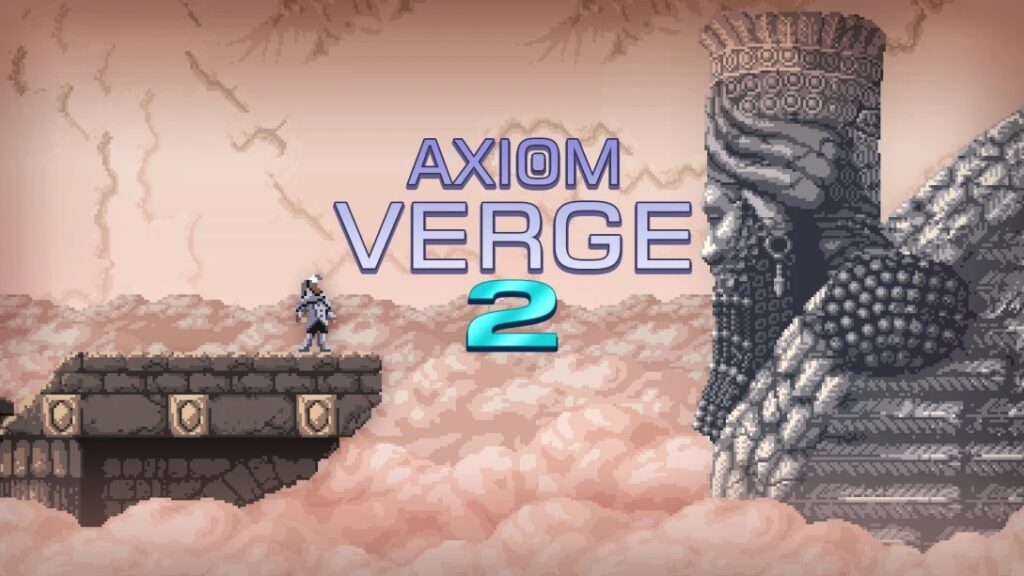
Expectations are a funny thing. No one expected Axiom Verge when Thomas Happ single-handedly brought it out in 2015. There were no preconceived notions of what to expect, just a very cool Metroidvania style game that suddenly appeared on the market to near-universal praise. Rightfully so too, as Axiom Verge is an absolute masterpiece. The visuals are outstanding, the level design is in a league with classic Nintendo work, and even the soundtrack is phenomenal. It’s an amazing accomplishment, and that makes releasing a sequel significantly harder.

Axiom Verge dropped last week in a surprise release during the Nintendo Indie showcase. Those of us that are fans (myself included) were pretty excited by this, naturally. But with virtually no information to go one, what were we getting? The big question was whether Thomas Happ would be able to make lightning strike twice with Axiom Verge 2 and it’s time to answer that question.
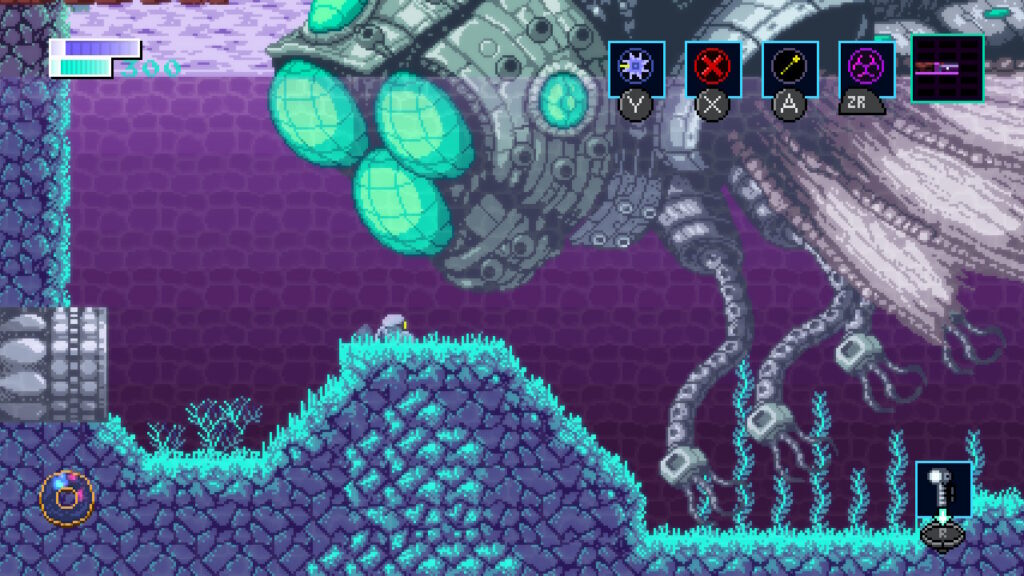
Immediately upon starting Axiom Verge 2, things feel more open. This isn’t a dark, cave-like tunnel system like the first game. Instead, we’re treated to Arctic bases, mountain ranges, jungles, underwater areas, and more. The game didn’t have a massive plot but it was focused and as you played through, it unfolded slowly. Axiom Verge 2 has taken a slightly different tack, giving a very basic story and minimal dialogue interspersed with a variety of tablets and papers you find around the world that slowly fill out the backstory of the game. There’s a fair bit going on, but the weird names make it a bit hard to follow, especially when you only encounter them occasionally, as this is first and foremost an exploration game. Uncovering the story requires a more thorough reserve of patience than the first game, and that’s more than a bit of a turn off here.
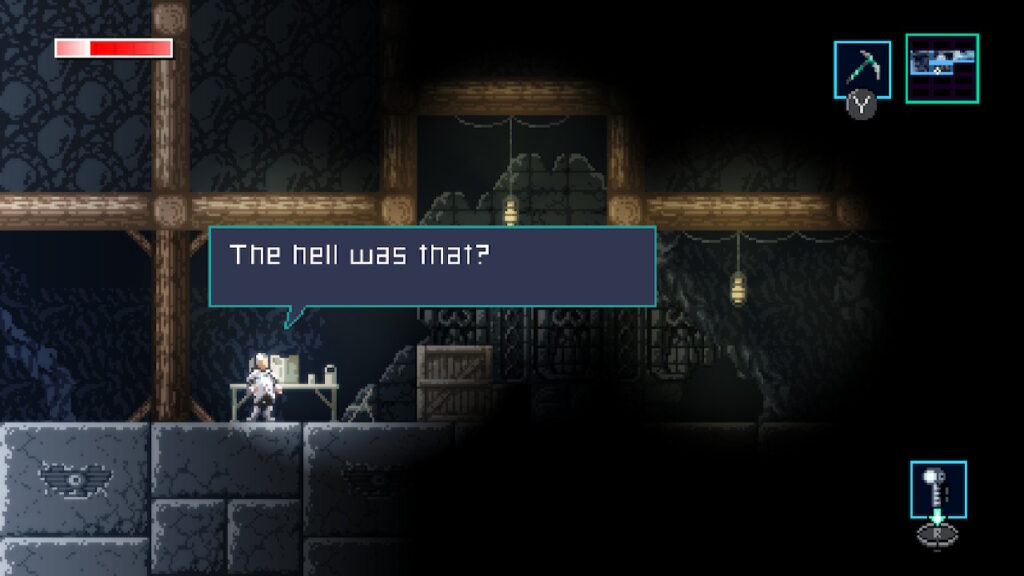
In addition to the meandering and inconsistently paced story, there’s rather a lot going on. First and foremost, you end up in another world much like the first game, and you need to explore that world to find out what’s going on, find your daughter, and get home. Exploring is challenging at first, as this is a Metroidvania, but you’ll slowly amass weapons and items that will allow you to progress exponentially as you explore the incredibly vast map. There are a ton of hidden areas, breakable areas, locked sections, seemingly unreachable platforms and more. Happ excels at level design and Axiom Verge 2’s levels are no less than masterful, sporting pixel perfect designs that only allow you to reach areas when you’ve managed to get the right equipment and return. The controls are incredibly tight too, and you have perfect control of your character at all times, a refreshing change for action games in a genre that tends to be a bit less precise than it should be. There are no glitches here to exploit and everything has its place and its reasons. Well, almost everything.
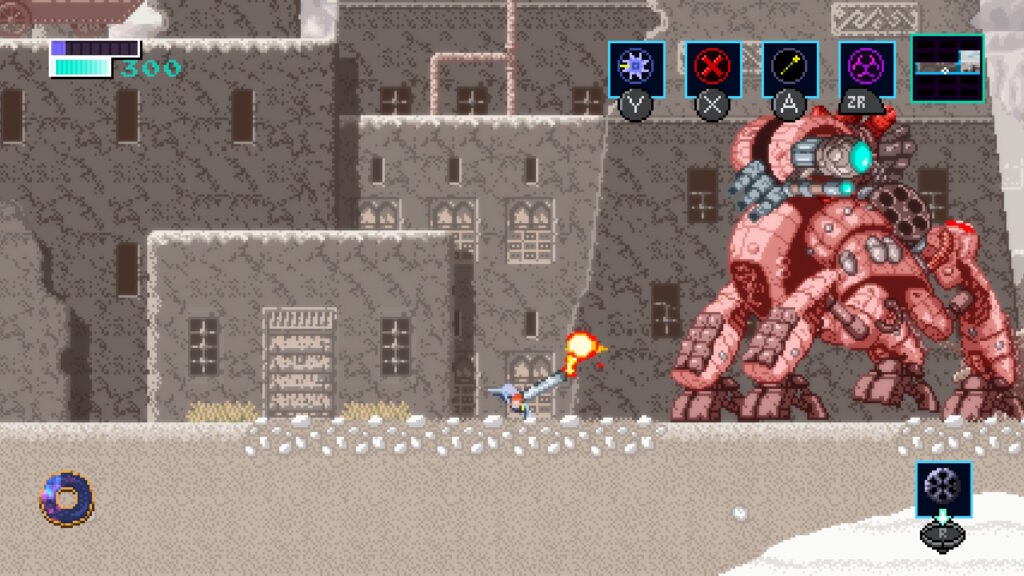
While Happ makes some of the best levels ever for this style of game, some of the other design choices are downright weird here. Foremost among these are the bosses. There are bosses just wandering around various areas of the game for no apparent reason. Walk into their range and you’re in for a fight. There are massive worm-like things, weird pulsing brains, giant biomechanical walkers and more. The enemy design is fantastic for every boss, which makes it all the weirder when you can beat pretty much any boss the first try without even learning their patterns. That’s right, the bosses in Axiom Verge 2 are ridiculously easy, seem to serve no purpose whatsoever, and all you get from them are upgrade canisters. No special weapons, no story unlocks, nada. And you can literally walk up to them and just pummel them to death within the first try or two. If they do have a pattern, it’s usually a very simple one and you’ll beat them no problem once you figure it out. Why go to the trouble of designing ridiculously cool enemies that have no contribution to either gameplay or plot though? It’s unclear and honestly a bit frustrating.
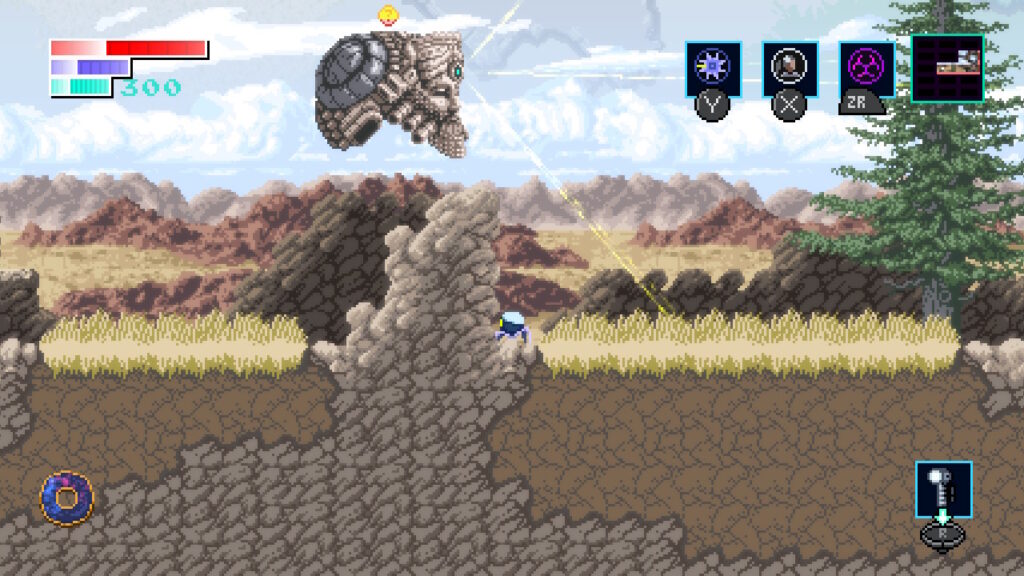
And while you can beat the bosses easily, some of the regular enemies in the game are downright vicious. Those damned owls for example…grr. But there’s no real impetus for defeating enemies either, so you can literally just run right past most of them without even fighting. No level ups, no benefits, nothing. You might get some health, but once you’ve unlocked the fast travel upgrade, even that becomes moot as you can fast travel back to the last save point and fully heal. Instead, the game becomes a massive explore-a-thon as you try to remember where you saw an area you couldn’t get into every time you find a new weapon or upgrade. Sure, exploring is fun and all, but it’s better if you have a purpose. Eventually, you’ll have a drone and there are sub-levels hidden through portals which you also need to explore. These levels use larger pixels for a low-res effect that while neat, is a bit hard on the eyes after a while. The background effects are neat though!
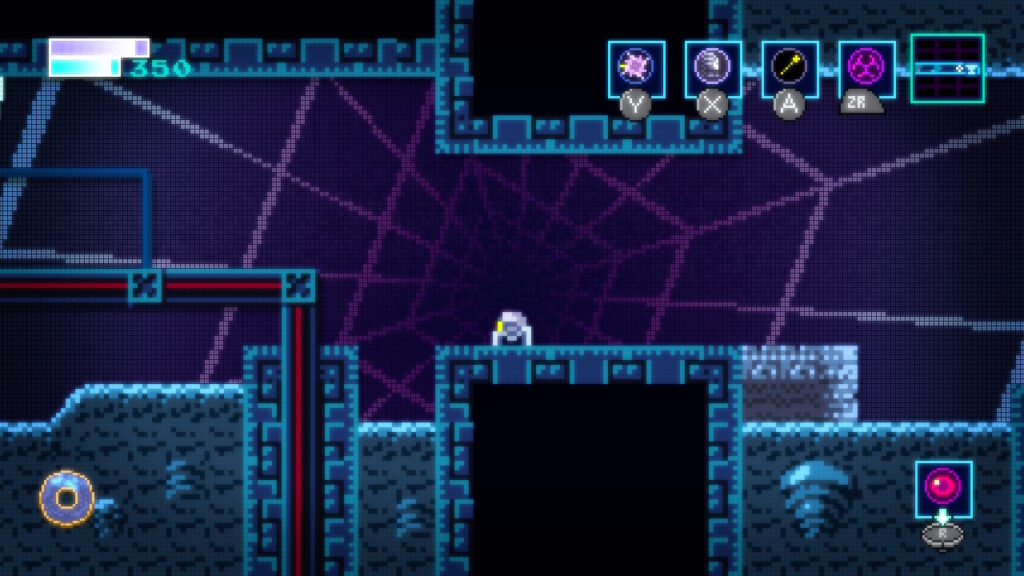
Speaking of visuals, the graphic design is quite good in Axiom Verge 2, though it does have a distinctly Middle Eastern flavor to it. That in itself isn’t a big deal, but it’s odd because there’s no apparent reason for it. Even the weapons and ‘gods’ from the game have a distinct cultural flair but it feels oddly out of place. When you die or fast travel, your body is summoned out like a djinn rising from a magic lamp and with the frequency this happens and the time it takes, the graphic gets stale awfully fast. There’s no way to skip it either, and perhaps it’s for load buffering, but it would almost be better to stare at a blank screen than to see this over and over. Power-ups and upgrade points all appear this way as well, with matching delays while they load and the hesitation is a bit grating. The music reflects Middle Eastern influences as well, and overall, the soundtrack is much less catchy than the first game. That’s a shame because the first game had an amazing soundtrack, one worth buying on a physical CD. The best that can be said for Axiom Verge 2’s soundtrack is that sometimes it’s not irritating. It’s not bad, but it’s definitely a much weaker offering than its predecessor.
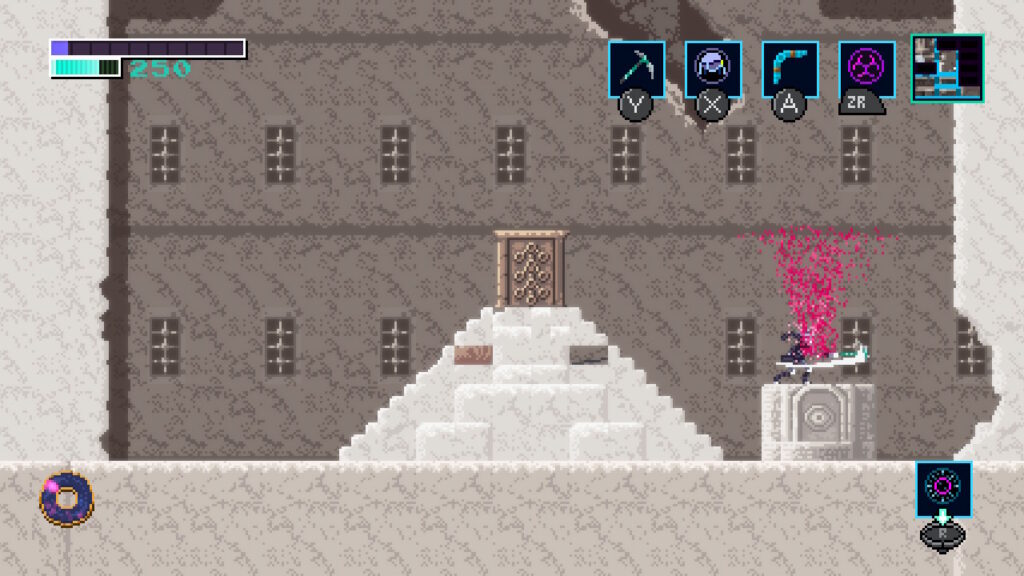
In terms of weapons, abilities, and other gameplay elements, Axiom Verge 2 has made a change to a much lower-pressure game than the first, with less direct confrontation required and that’s not necessarily a good thing. It’s not that the weapons are bad, per se, but the boomerang for example has no purpose most of the time and the game can be played almost entirely without it. The same goes for hacking enemies and bringing them over to your side. Sure you can do it, but why? You can literally just run past them instead. The focused drive of the first game has been blunted fairly heavily here in the second and it often feels like you’re simply meandering through the same areas over and over, looking for things you may have missed. It’s a slow burn of a game that is affected badly by pacing and will turn off a fair number of fans of the first game.
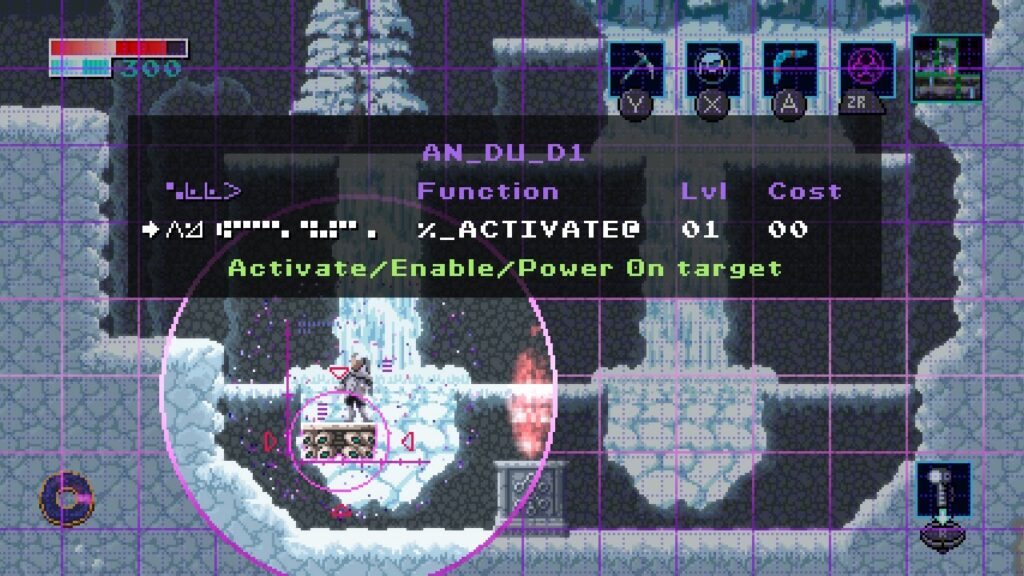
Again, that’s not to say that Axiom Verge 2 is bad, instead simply that it’s a slow, methodical game that rewards patience and dogged tenacity much more so than its predecessor. For those of you who’ve been waiting patiently for almost 6 years, this fundamental shift in the feel of the series (since it’s a series now) will definitely be disappointing. Is the game fun? Well, that depends on what you’re looking for. There are a few references and ties to the first game, a whole new storyline, and outstanding design work. But boss fights are pointless, the story is incredibly slow, and it’s very hard to figure out where to go next on occasion and these issues combined lead to a lesser overall experience than the first game. If you love the Metroidvania genre, you’ll at least enjoy Axiom Verge 2, but this game is not the culmination of the style by any means and there have been a lot more impressive new entries over the last few years. The controls are spot on however, and the weapons and items you get are varied and interesting.
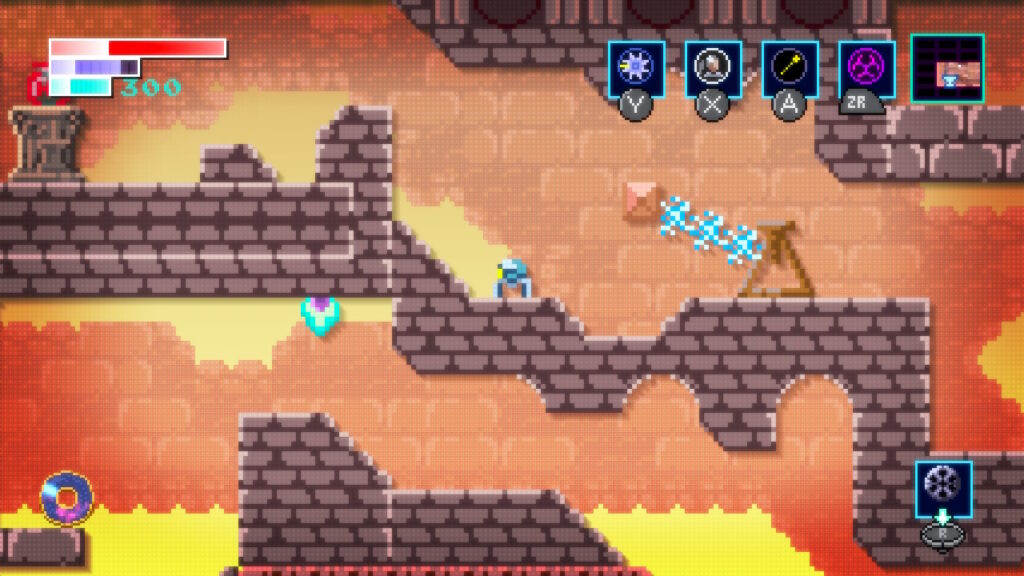
From a visual and gameplay design standpoint, Axiom Verge 2 is a masterpiece, but that’s not the entirety of a game. Between the weaker-feeling plot (even though there’s way more information here) and the inconsistent pacing, Axiom Verge 2 somewhat fails to hit the mark. It’s still an outstanding game by any measure, and will keep most players busy and engaged for hours, but that’s the problem with expectations. They’re hard to live up to. It’s clear that there was a lot of pressure on Thomas Happ here and for the most part, it’s a purely excellent game, but the shift from the first game is so pronounced that it almost feels like an unrelated entry and that might push a few players away. Is Axiom Verge 2 worth playing? Yes. Is it good? Yes. Is it what we had anticipated? Maybe, maybe not. But either way, it’s a solid Metroidvania that’s worth your time, even if it might not be the Axiom Verge 2 you anticipated.
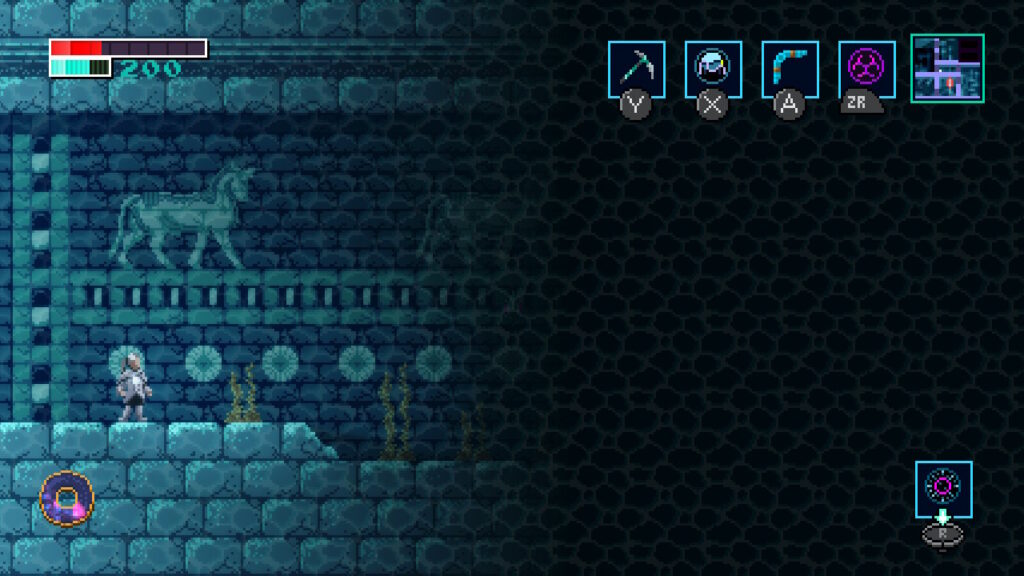
This review is based on a digital copy of Axiom Verge 2 provided by the publisher. Axiom Verge 2 is available on Nintendo Switch, PlayStation 4, and PC on the Epic Store and is forthcoming for PS5. All screenshots are from actual gameplay.

